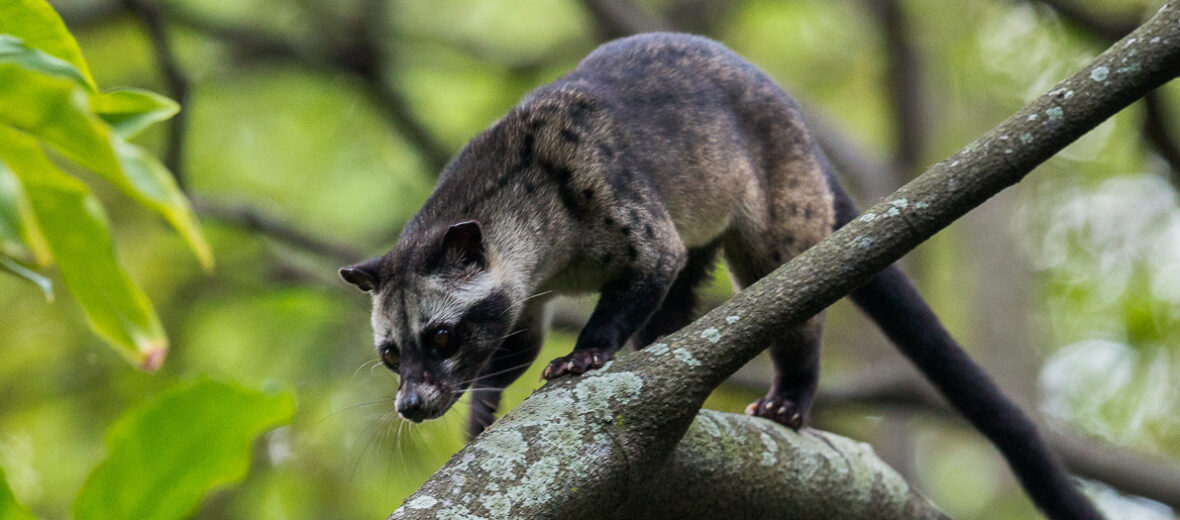
The Asian palm civet, aka, common civet or Toddy cat, is a small cat-like critter found in southern and southeast Asia. They are typically found in tropical rainforests and jungles, but can also be found in garden and park environments that provide plenty of fruit; especially their favorite… coffee beans! Habitat loss at the hands of the palm oil industry, as well as hunting for their meat poses a threat to this critter but they aren’t in danger of extinction yet. The IUCN lists them as Least Concern.
First the Stats…
Scientific name: Paradoxurus hermaphroditus
Weight: Up to 7.1 lbs.
Length: Up to 1.7 feet, plus an 18 inch tail
Lifespan: Up to 20 years
Now on to the Facts!
1.) Palm civets are nocturnal (active at night).
2.) Civets are solitary except during mating season.
3.) They are both terrestrial (spend most of their time on the ground) and arboreal (spend most of their time in trees). While in the trees, they aren’t as agile as they lack prehensile tails, like other civets.
4.) These critters are more closely related to weasels and mongooses than to cats.
5.) Sounds made by these civets are meows, hisses, snarls, and spits.
But wait, there’s more on the Asian palm civet!
6.) Territory is marked by dragging their anal glands (called perineal glands) along various surfaces, like the ground and tree branches.
7.) Asian civets prey on rodents, amphibians, and small reptiles. They also eat fruits and flowers of palm trees, mango trees, and coffee berries.
Did you know…?
Asian palm civets are famous for their ability to pass (poop) out coffee seeds/beans as they love the coffee berry and can’t process the seeds within the berry. The coffee made from their feces, coined cat poop coffee, is more commonly called kopi luwak and is the most sought after of all coffee.
8.) Tigers, leopards, dholes, and pythons all prey on these civets.
9.) When threatened, they will often release a nasty smelling substance from their perineal glands.
10.) Females have up to 2 litters a year, yielding 2 – 5 pups. These pups are weened by 2 – 3 months.
Now a Short Asian Palm Civet Video!
Also, check out the Critter Science YouTube channel. Videos added frequently!
Want to suggest a critter for me to write about? Let me know here.



